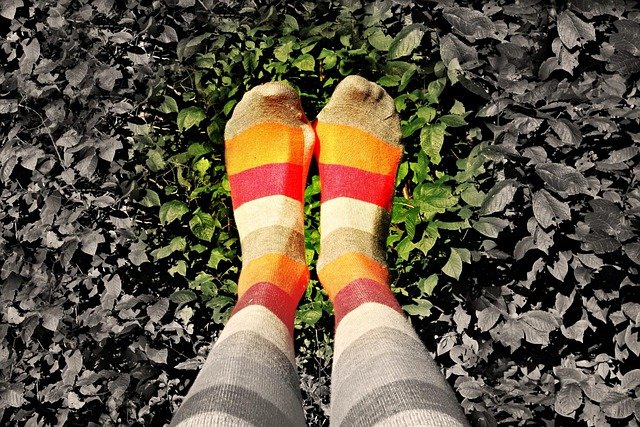Socks: Function, Fabric, and Foot Health Considerations
Socks are a small but important part of daily apparel, affecting comfort, hygiene, and performance in sports and everyday life. This article explains how different sock features work, why materials matter for moisture control, how socks relate to foot health, and practical tips for choosing pairs for varied activities. Information here is factual and intended to help you make informed choices about socks for different uses.

How do moisture wicking materials work in socks?
Moisture wicking refers to a fabric’s ability to move sweat away from skin and help it evaporate. In socks, moisture-wicking fibers such as polyester blends, acrylics, or treated natural fibers draw liquid away from the foot surface into the outer fabric layers. This reduces the time feet stay damp, which can lower friction that causes blisters and create a cooler feeling during activity. Proper moisture management also reduces odor-causing bacteria growth compared with cotton that retains water. When selecting socks for long wear or athletic use, look for clear fabric information and construction details like mesh zones or venting that enhance airflow.
Where do socks fit within apparel choices?
Socks are an integral piece of apparel that interacts with footwear, legwear, and activity-specific clothing. Choice of socks can complement temperature regulation strategies — lightweight, breathable socks for warm weather and thicker insulating socks for cold conditions. Socks also influence fit inside shoes; padding and seam placement affect comfort and shoe performance. For professional or dress settings, thin knit or mercerized cotton socks match formal shoes and trousers. For casual outfits, midweight cotton blends or patterned designs serve both function and style. Consider the whole outfit and footwear when selecting socks to ensure comfort, appearance, and compatibility.
What features matter for sports socks?
Sports-specific socks are designed to support repeated movement, impact, and moisture control. Key features to look for include targeted cushioning in the heel and forefoot to reduce impact, arch compression or support bands for stability, reinforced toes for durability, and flat or reinforced seams to reduce irritation. Many sports socks combine synthetic fibers for moisture management with elastane for stretch and fit retention. Consider sport demands: running often benefits from lightweight, low-bulk socks with good moisture wicking, while court sports may require thicker padding and ankle protection. Fit is crucial—socks that move inside the shoe can cause blisters, so correct sizing and secure cuffs matter.
How do socks affect foot health?
Socks influence foot health by regulating moisture, friction, temperature, and pressure distribution. Properly fitting socks reduce rubbing and shear forces that create blisters; breathable materials lower the risk of fungal infections by keeping skin drier; and cushioning can reduce pressure points that aggravate calluses or plantar pain. For people with specific conditions—diabetes, neuropathy, or poor circulation—socks designed with seamless toes, non-binding cuffs, and extra cushioning can be helpful. This article is for informational purposes only and should not be considered medical advice. Please consult a qualified healthcare professional for personalized guidance and treatment.
How to choose socks for everyday use and durability?
Choosing durable, comfortable everyday socks involves balancing material, construction, and care. Look for reinforced heel and toe areas where wear concentrates, and consider blends that combine natural fibers (for breathability) with synthetics (for durability and moisture control). Check fabric weight and knit density: heavier knits can last longer but may be too warm for hot climates. Proper laundering—turning socks inside out, washing in cool water, and avoiding high-heat drying—extends lifespan. Rotate multiple pairs to reduce wear on any single sock and consider specialized replacements for activities like hiking or running to prevent premature breakdown.
| Provider Name | Services Offered | Key Features/Benefits |
|---|---|---|
| Bombas | Retail socks focused on comfort and design | Padded zones, honeycomb knit, social donation program |
| Smartwool | Merino wool-based socks and apparel | Natural odor control, temperature regulation, soft merino wool |
| Darn Tough | Performance and lifestyle socks | High-density knit, lifetime warranty, durability |
| Nike | Athletic socks and sports apparel | Performance fabrics, targeted cushioning, wide range of sport-specific designs |
| Under Armour | Sports performance socks and gear | HeatGear and moisture-wicking blends, compression options |
Provider and product offerings change over time. Conduct independent research for the latest product details and availability.
Conclusion
Socks serve multiple roles: they manage moisture, provide cushioning and protection during sports, influence foot health, and tie into overall apparel choices. Understanding fabric properties, construction details, and the specific needs of your activities helps you pick socks that improve comfort and longevity. Regular care and appropriate rotation also extend the life and performance of your sock collection.





